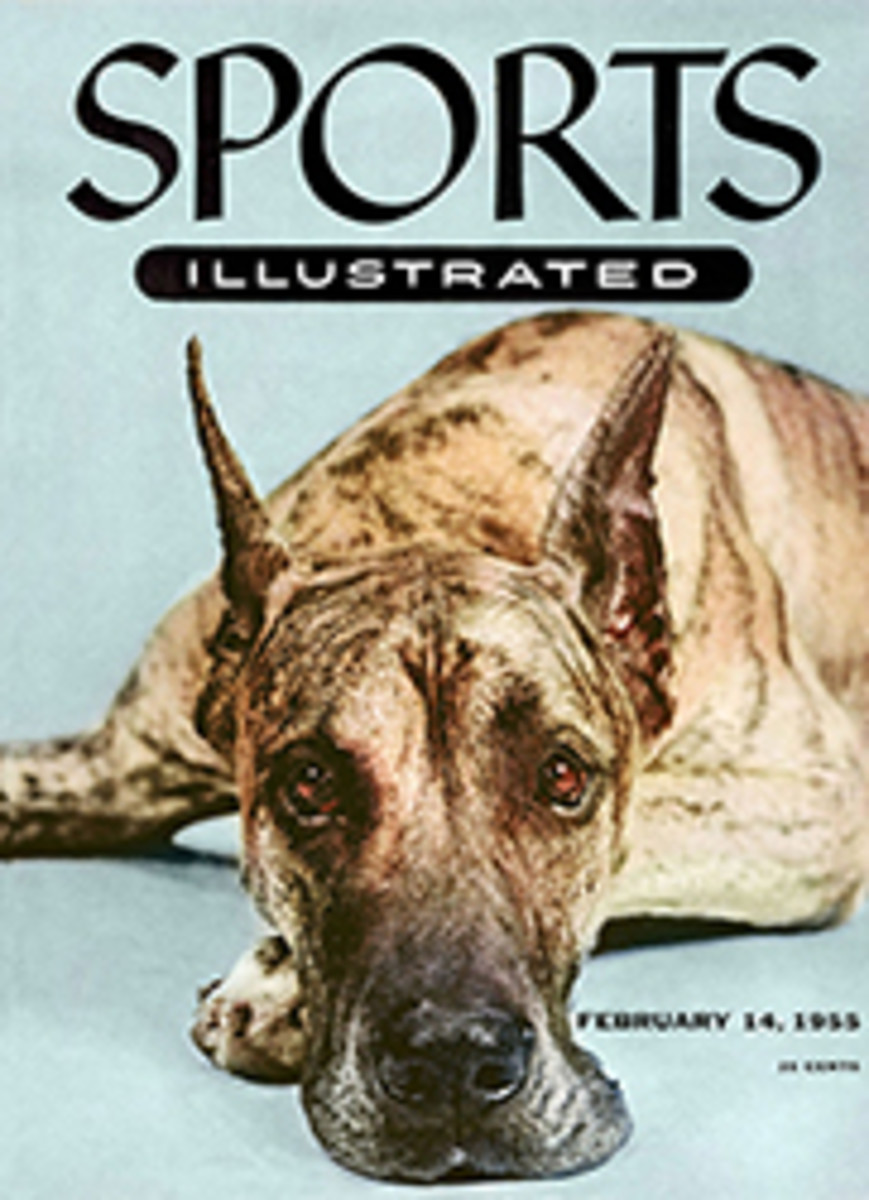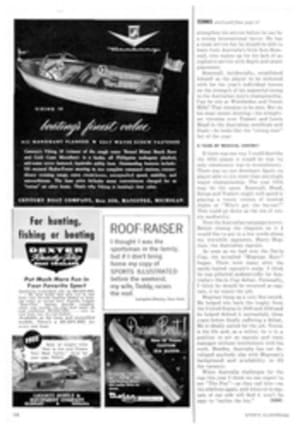
A RACING PROBLEM
In the early days of downhill racing, the holiday skier could hold his own against the career skier, and the townsmen of London and Paris could race on even terms with the Alpine peoples. In those days, our British ladies won two world championships and our best amateurs—Mackintosh, Bracken and my son Peter—won occasional international competitions against the best Alpine aces. But by the early '30s, it was becoming clear that a traveling circus of stars was beginning to dominate the races, and that the proportion of participants to spectators was declining rapidly.
As the top racers were all accepted by the Fédération Internationale de Ski as amateurs—including those who taught skiing for money—the paper distinction between amateur and professional was useless to prevent what, in point of fact, has now happened: the elimination of the genuine amateur from the top competitions.
Furthermore, even the paid ski instructors were beginning to suffer a disadvantage. While they spent hours every day teaching the sport, a select number of "amateurs" were completely free to practice, backed by their parents or by commercial institutions that often invested thousands of dollars in securing for their amateur the best possible training.
In the light of these circumstances, it seemed important to make a different distinction than the one between amateur and professional—namely that between the holiday and the career athlete. And by career athlete I mean the man who is making or intends to make a career of sport, either as a teacher, a player, an exhibition performer, or by giving his name to sporting equipment or joining a sports firm outright. The holiday athlete, on the other hand, is planning for a career which has no connection with sport; and consequently, his opportunities for sport are limited to his leisure time.
I felt, therefore, that an urgent need was developing for an important international event restricted to genuine holiday skiers. Accordingly, I approached the Duke of Kent for permission to start a race which would bear his name, and which would be restricted to skiers who did not live in skiing centers. Furthermore, each entrant must have skied for no more than 60 days in the previous winter season. In connection with this individual competition, there was to be a townsmen's team race for a cup presented by the Infante Alfonso d'Orleans Bourbon.
Most of those who heard of the race assured me that qualifying standards for the Duke of Kent race would not work, and that the Kent qualification would be even more of a joke than Olympic amateurism. In fact, one Italian skier told me point blank, "You know, my dear Arnold, in the country of Machiavelli, this qualification would be most difficult to enforce."
In the face of all this pessimism, the first race was held in 1937 and won by Arnold Kaech, present secretary of FIS. Since then the Kent Cup has been held 12 times, and, I am happy to say, the Kent qualification, unlike amateur standards in many other international competitions, has stood up. Whereas there is a kind of gentlemen's agreement to raise no questions about the amateur qualifications of Olympic ski competitors, the entrants in the Duke of Kent have regarded it as a point of honor not to cheat on their credentials.
The Kent race has gradually become the parent of a large family of other townsmen's or citadin competitions. Qualifications for these races vary, and none but the Kent Cup imposes the 60-day limit. However, at the Derby Sciatori Cittadini at Sestrieres on Jan. 29, and at the upcoming Le Derby des Skieurs Citadins at Még√®ve on Feb. 26, all members of the national teams of the leading skiing countries are barred.
INVITATION FROM EUROPE
Britain has won four Kent competitions since the war. Among the winning towns in past Infante Alfonso competitions are Berne, Lucerne, Oslo and London. It would be delightful to welcome a team from Los Angeles, Boston, New York or any of the other American cities where skiers abound. For, just as in Europe, there are hundreds of holiday skiers in America who have a taste for international competition, but who would have no hope of finishing in the first half of an Arlberg-Kandahar or a Lauberhorn. They might, however, have a good chance of victory in the Kent or any of the other Citadin races. In any case, they would be most welcome as entrants in a truly amateur event, competing against skiers of their own caliber who have had comparable opportunities for practice and training.
PHOTO
ILLUSTRATION
"Biggest and tastiest fish I ever caught."

